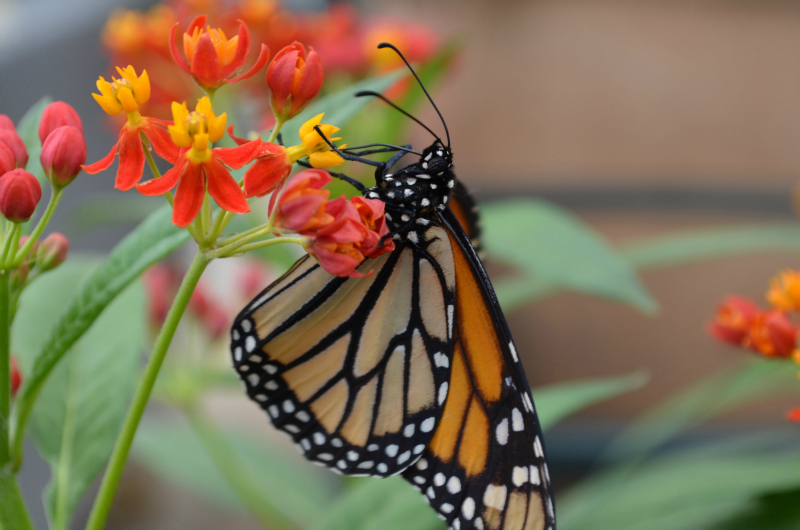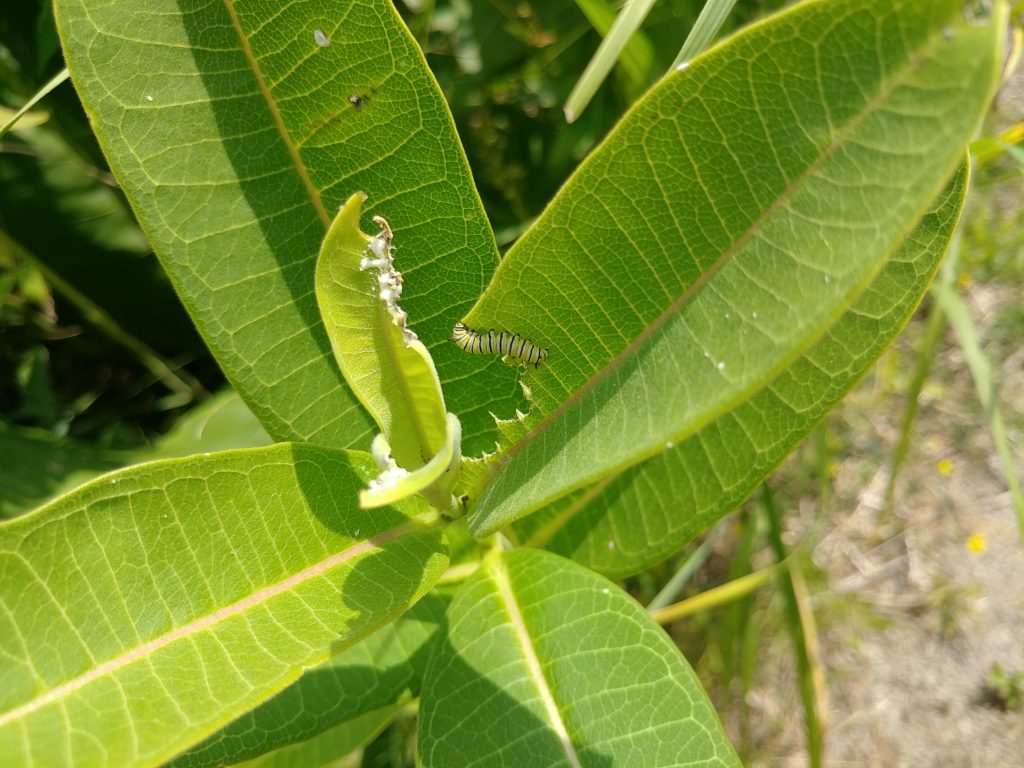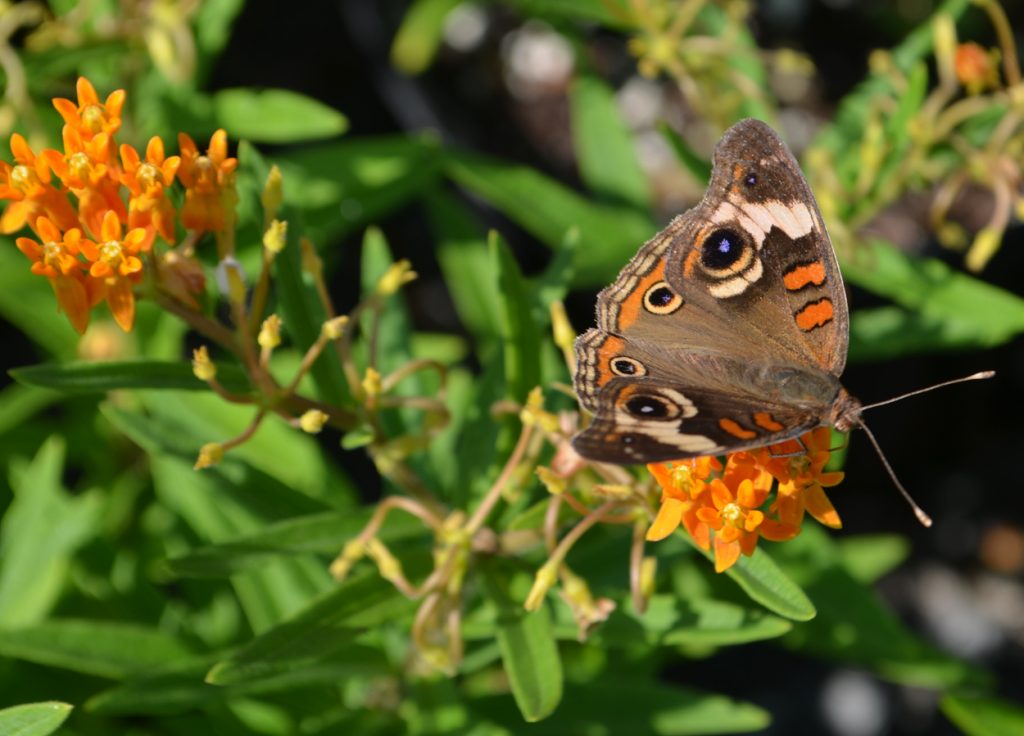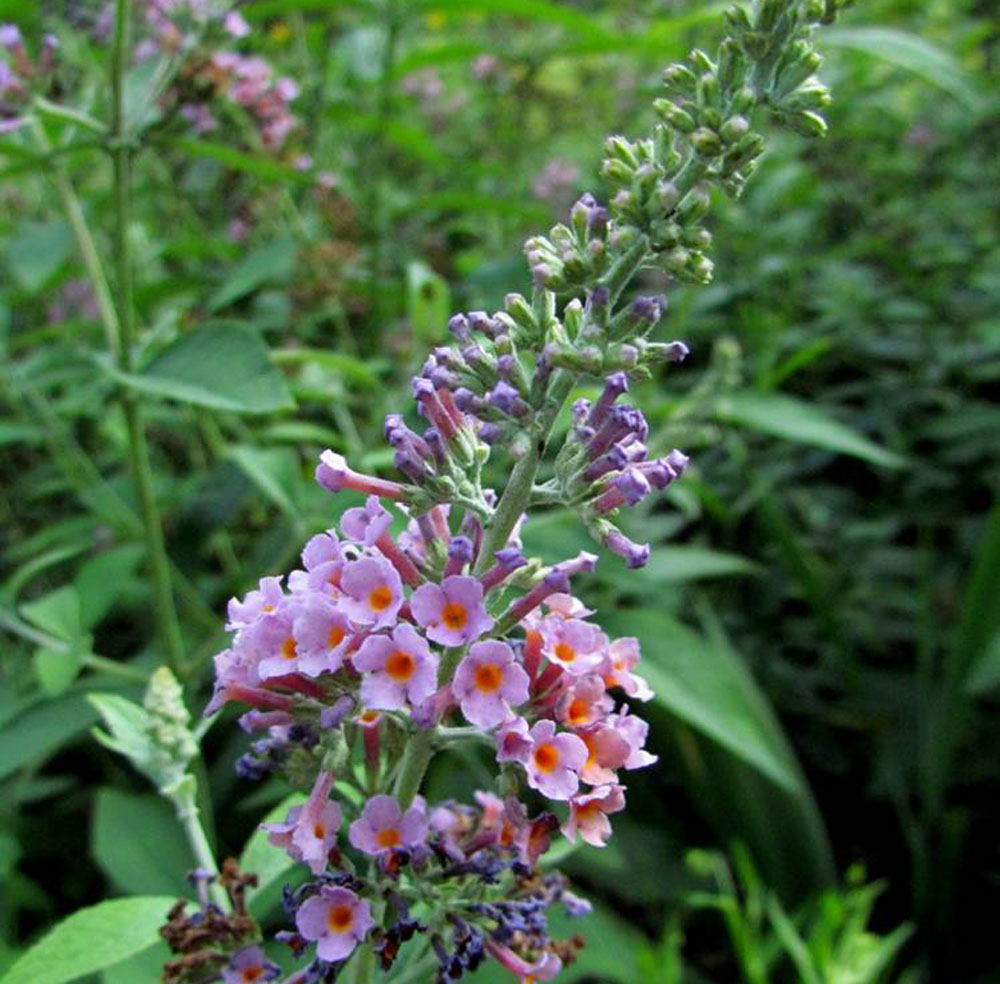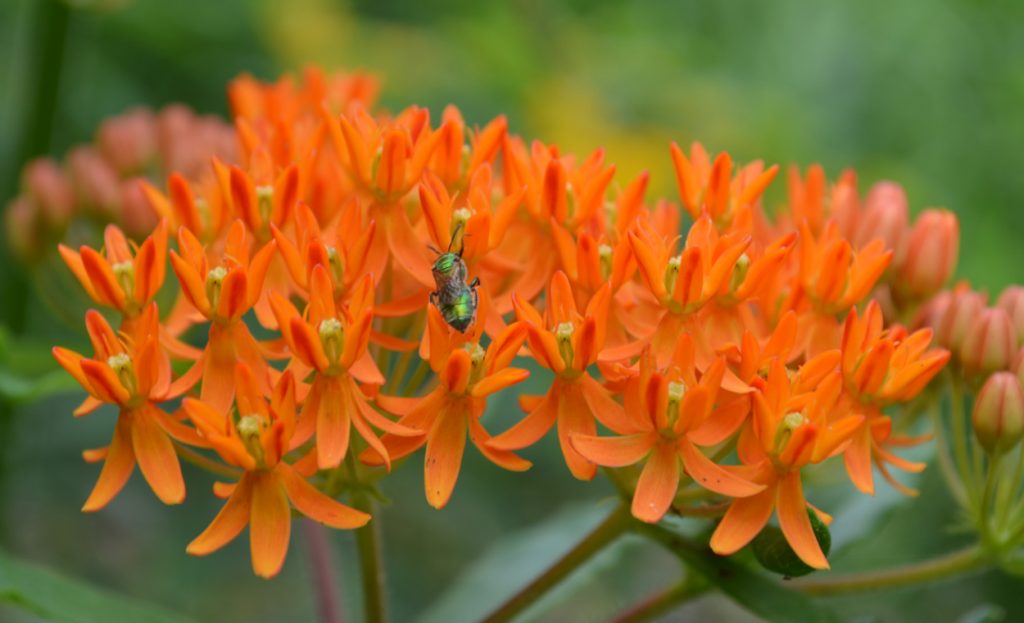Save a Monarch, Plant Milkweed
Milkweed might need some rebranding. It’s unfortunate that “weed” is part of its name when this plant does so much good. Asclepias is the botanical name for a genus of perennial flowering plants well known as the host plant for monarch butterflies. The monarch butterfly population has declined 80% in the past 20 years, and they rely on milkweed for food and repopulation. You can help out these butterflies by planting native milkweed in your garden.
Here at Lewis Ginter Botanical Garden, we want to be part of the monarch butterfly solution! Asclepias incarnata (Swamp Milkweed) and Asclepias tuberosa (butterfly weed) are intentionally planted around the edge of Sydnor Lake in a “designed plant community.” These plants’ leaves are almost the only place monarchs will lay their eggs, and luckily they’re the perfect spot for caterpillars! The larvae eat the leaves and absorb toxins to ward off predators. Butterflies can find also find refreshment from the plants’ nectar.
OPTIONS FOR YOUR GARDEN
If you want to plant some milkweed in your own yard, Exhibitions Assistant Mary Lincoln suggests several that are native to Virginia:
- Asclepias syriaca: Common Milkweed is a monarch’s favorite! It has large balls of pink-purple flowers and a nice scent. Be sure to plant A. syriaca in an area where you don’t mind it spreading, as it may take over the area where it is planted.
- A. tuberosa: This popular choice is known as butterfly weed. It has clusters of bright orange and yellow petals.
- A. incarnata: Swamp Milkweed is widely available, but needs more moisture than other varieties — it really likes to keep its “feet” wet. It has large groups of darker pink and purple flowers.
- A. verticillata: Whorled Milkweed is less common but still native! It has skinny “whorled” leaves and smaller light green flowers.
- A. purpurascens: This type looks like A. syriaca without spreading as easily. It has beautiful dark purple flowers.
You can also attract monarchs by planting A. curassavica or Gymnocarpus physocarpa. These aren’t native though, and because they aren’t native, they aren’t our first choice. Non-natives that attract monarchs are somewhat controversial. Some sources, like the Virginia Native Plant Society, think that planting non-native milkweed does more harm than good.
- A. curassavica: Tropical Milkweed has attractive flowers for landscaping. It is an annual plant that dies back in the winter, so you need to replant it every year. It is less likely to impact the monarchs’ migration cycle in Virginia. Further south, it can have negative effects on monarchs by growing all year and tempting them not to migrate. It has fiery red, yellow and orange flowers.
- Gomphocarpus physocarpa: Also sometimes called Asclepias physocarpa, or Hairy Balls, this is another popular non-native in the milkweed family. While it is perennial in its native Africa, in Virginia, you’ll need to replant it each year.
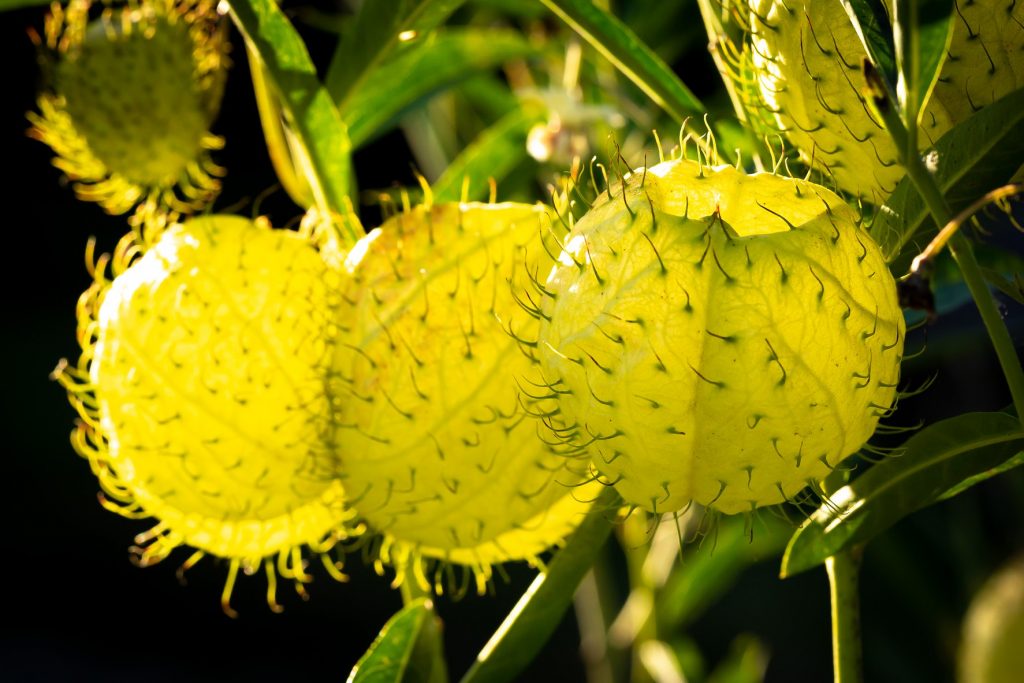
Hairy Balls Milkweed or Gomphocarpus physocarpa adds great texture to your garden, but if you want to help monarchs specifically, this is not your best choice. Image by Tom Hennessy
BEWARE THE BUTTERFLY BUSH!
“If you’re going to plant something, plant butterfly weed, not butterfly bush,” Mary explains. While they have similar names, Buddleia davidii (Butterfly Bush) won’t do much good for monarchs. Butterfly Bush is invasive, and its nectar is poor in nutrients. In fact, Master Naturalist Linda McBride describes its nectar as “junk food” for butterflies!
THE MORE, THE MERRIER
Some varieties of milkweed can take over the area where they grow. This isn’t necessarily bad, though. Monarch caterpillars are hungry! Caterpillars won’t have to compete for dinner if there’s plenty of food to go around for the monarchs and milkweed bugs too. Unlike monarchs, milkweed bugs prefer the plant’s seeds. Large milkweed bugs (Oncopeltus fasciatus) are herbivorous, but in a pinch, small milkweed bugs (Lygaeus kalmii) will feed on monarch eggs.
If your goal is to help out the monarchs, more milkweed is better. If you want to shop locally and support our garden you can grab some at Spring PlantFest on April 30 and May 1, 2021. Or, if you prefer to have them delivered, you can order milkweed seeds in the mail, our friends at Save Our Monarchs will send you free Asclepias syriaca milkweed seeds if you mail them a self-addressed, stamped envelope.
